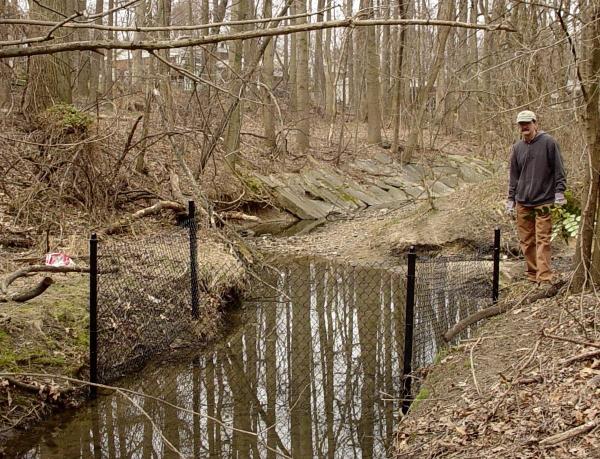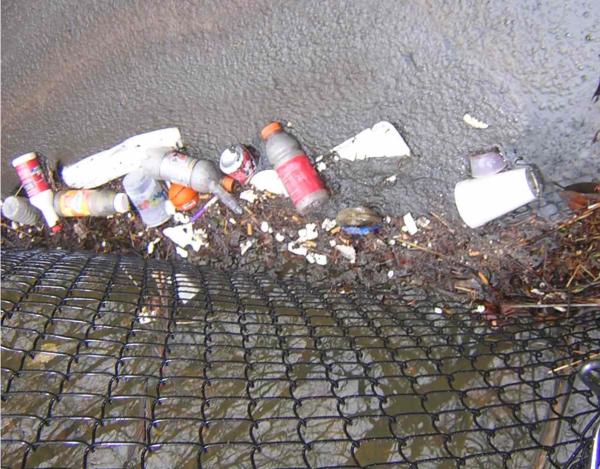Trash is one of the most pervasive problems in urban waterways such as Sligo Creek. Much of the trash in Sligo Creek is washed from the street and into the creek with the stormwater. It is not unusual to clean the creek and have it lined with trash again after the next rainstorm. Cleaning up half a mile of headwaters stream takes at least 2 hours. Trash screens that collect stormwater borne trash at a few key locations along the creek can save a lot of time and effort. One of the recommendations of the Sligo Creek Trash Reduction Plan prepared by John Galli and Peter Guillozet in 2000 includes installing trash-catching devices such as chain link fences near the end of stormwater pipes. According to the Galli/Guillozert plan, chain link fences are inexpensive and may capture a significant portion of the floating trash. One of the main disadvantages is that this strategy will require frequent inspections and trash removal (perhaps after every heavy rain). A trash screen, though inexpensive, will require a volunteer to regularly monitor and maintain the site. The screen can also block the water flow if not maintained. Along the creek there are numerous naturally occurring “trash screens” that do not cause significant water blockage, so we don’t anticipate that this will be a serious problem.
The Litter Committee saw that this was a simple yet potentially effective means of keeping the creek trash free. The Litter Committee was unable, however, to find any chain link fence screens in use. The Committee decided that FOSC would request that the Parks install one pilot trash screen at the headwaters of Sligo Creek and that FOSC would maintain, monitor, and evaluate the trash screen. In the fall of 2003, FOSC, AWS and the Park Manager met at the site and discussed the project. The Park Manager agreed to install a trash screen. In March 2004 the trash screen was installed.
Photo of newly installed trash screen, March 2004

Soon after the trash screen was installed, I thoroughly cleaned the creek downstream of the screen and started periodically monitoring the trash levels in the creek. My initial feeling is that the screen is fairly effective. It has been my observation that most of the trash that gets in the creek in our section of the park enters with the stormwater after a heavy rain. Below is a photo of the trash collected after a moderate, but sustained rain. The screen captured about 90% of the large pieces of trash (plastic bottles, bags, Styrofoam products, aluminum cans).
Overhead view of screen after two days of light to moderate rain, April 3, 2004



